Archaeologists uncover thousands of Ice Age rock paintings in what has been dubbed the “Sistine Chapel of the Ancients.”
A remarkable find has been made in the Colombian Amazon, deep within the dense rainforest. The discovery consists of an 8-mile-long stretch of rock, located at a remote site known as Serranía de la Lindosa, covered with ice age drawings of extinct creatures such as giant sloths and mastodons. The intricate illustrations were created using ochre, a red natural clay pigment commonly used as paint in ancient times. These drawings are estimated to date back to between 11,800 and 12,600 years ago, which is around the time when the world was exiting the Ice Age. Discovered by British and Colombian archaeologists in 2017, this awe-inspiring collection of prehistoric art has been named the “Sistine Chapel of the ancients,” and promises to offer significant insights into prehistoric South Americans.
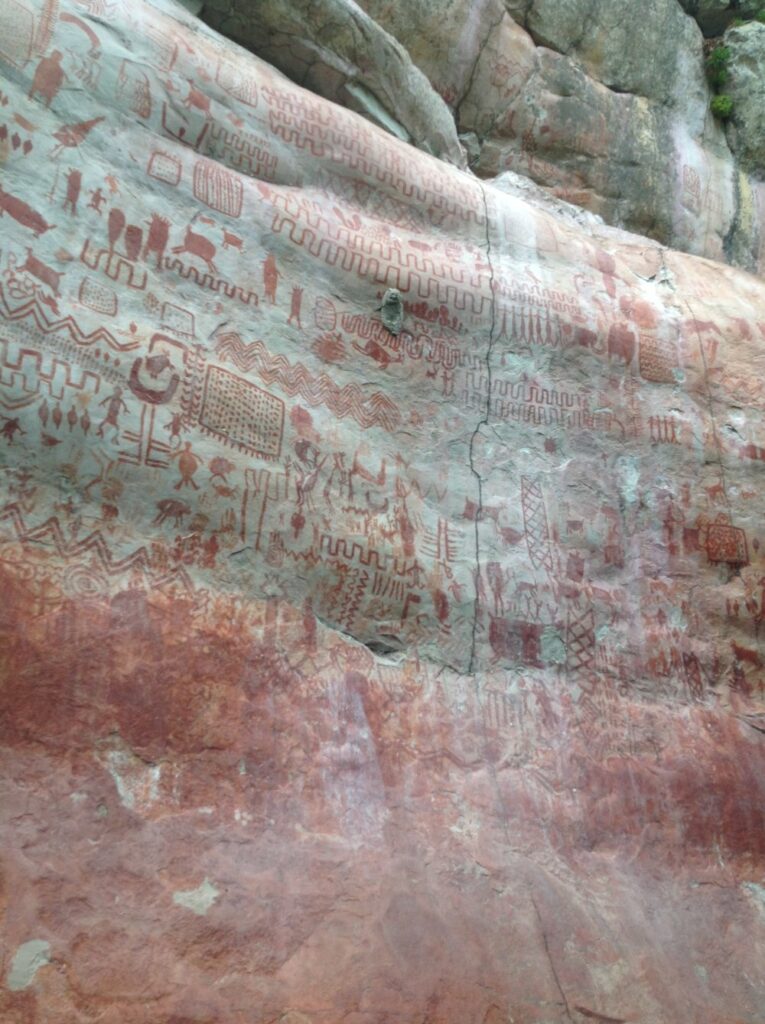
According to co-researcher Mark Robinson, an archaeologist at the University of Exeter who analyzed the rock art with Colombian scientists, the images created by the earliest people to live in western Amazonia are truly incredible. However, to study the drawings at Serranía de la Lindosa, the researchers had to obtain clearance from both the Colombian government and unallied rebel forces in the area. Then, they had to hike for five hours to reach the site.
The sheer number of individual paintings at the site, which have not yet been counted but are estimated to be in the tens of thousands, awed the scientists. The drawings depict prehistoric humans and the flora and fauna that once inhabited the Amazon region, including fish, lizards, and porcupines that would be familiar to modern viewers. However, they also feature extinct prehistoric creatures such as giant sloths, palaeolama, and mastodons that roamed a savanna and scrub brush landscape vastly different from the modern rainforest.
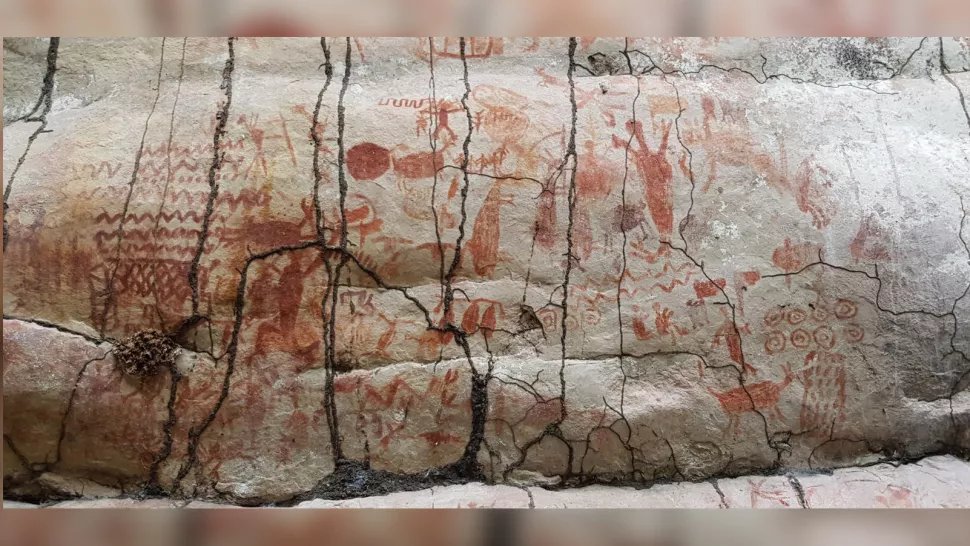
The prehistoric art also portrays humans engaged in activities such as hunting, dancing, and wearing masks. However, the archeologists examining the paintings are currently only able to make conjectures about the meaning of certain scenes. Nevertheless, they are confident that the Serranía de la Lindosa paintings will offer crucial insights into prehistoric human behavior and interactions with animals.
Among the depictions of human behavior, there is an unusual one that shows humans either jumping or hanging from wooden towers. The research team speculates that such structures may have enabled the ancient artists to paint scenes on the cliff wall that were beyond the reach of a typical human.
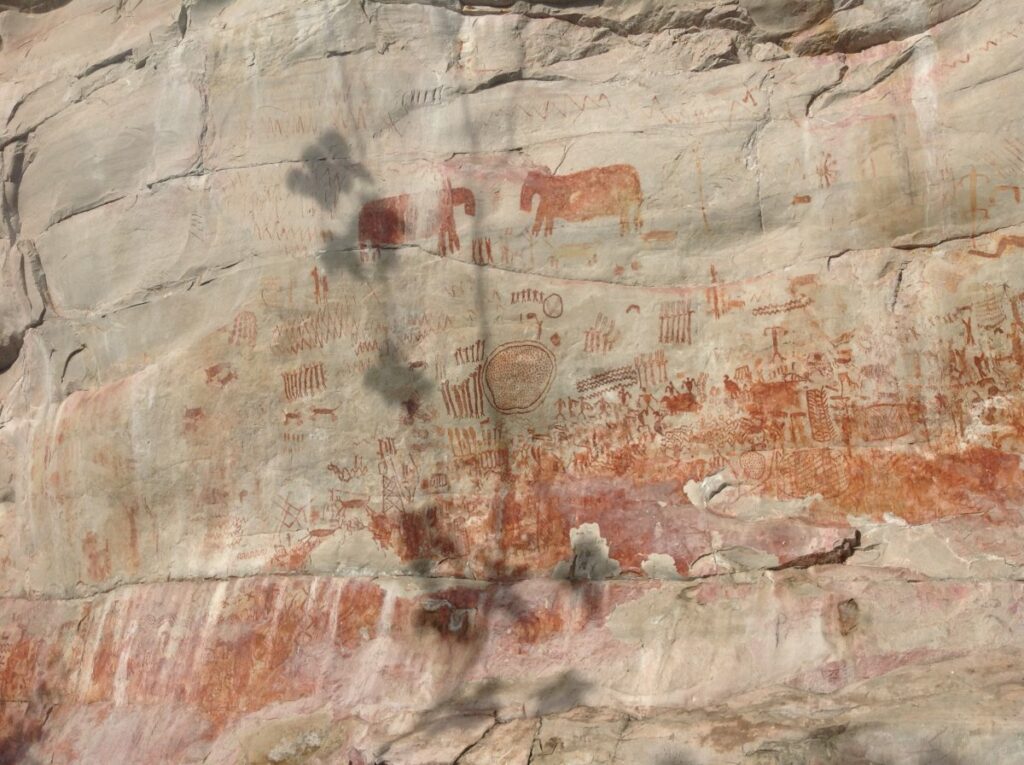
The rock art found on the cliffs offers a glimpse into the environmental changes that occurred at the end of the last Ice Age. As the temperatures rose, the Amazon region underwent a transformation from a mix of savannas, thorny scrub, and forests to the lush tropical rainforest we see today, as stated by archaeologist Mark Robinson. This prehistoric art has provided valuable insights into the past, according to explorer Ella Al-Shamahi, who also visited the site. The presence of ice age megafauna in the drawings is a time marker and highlights how the Amazon region has changed over time, something that many people are not aware of.
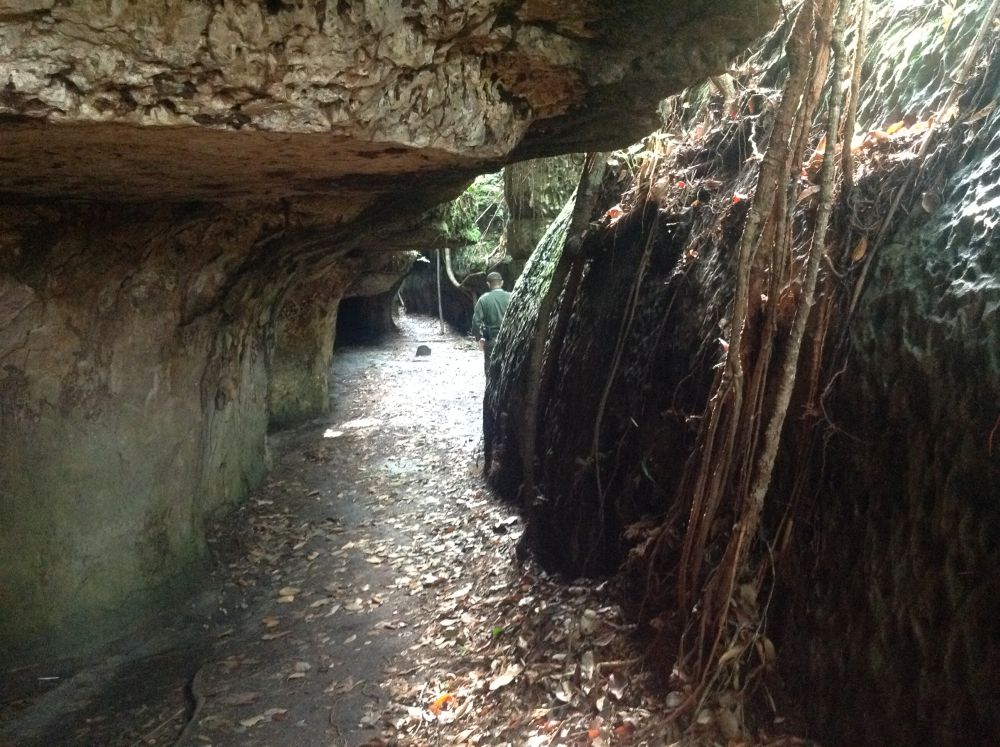
Robinson stated that “the paintings provide a striking and thrilling insight into the daily existence of these societies. It is remarkable for us to contemplate that they coexisted with and hunted enormous herbivorous animals, some of which were as big as a small car.”
The scientists noted that a significant number of South America’s large animals became extinct at the conclusion of the last Ice Age, most likely as a result of human hunting and climate change.
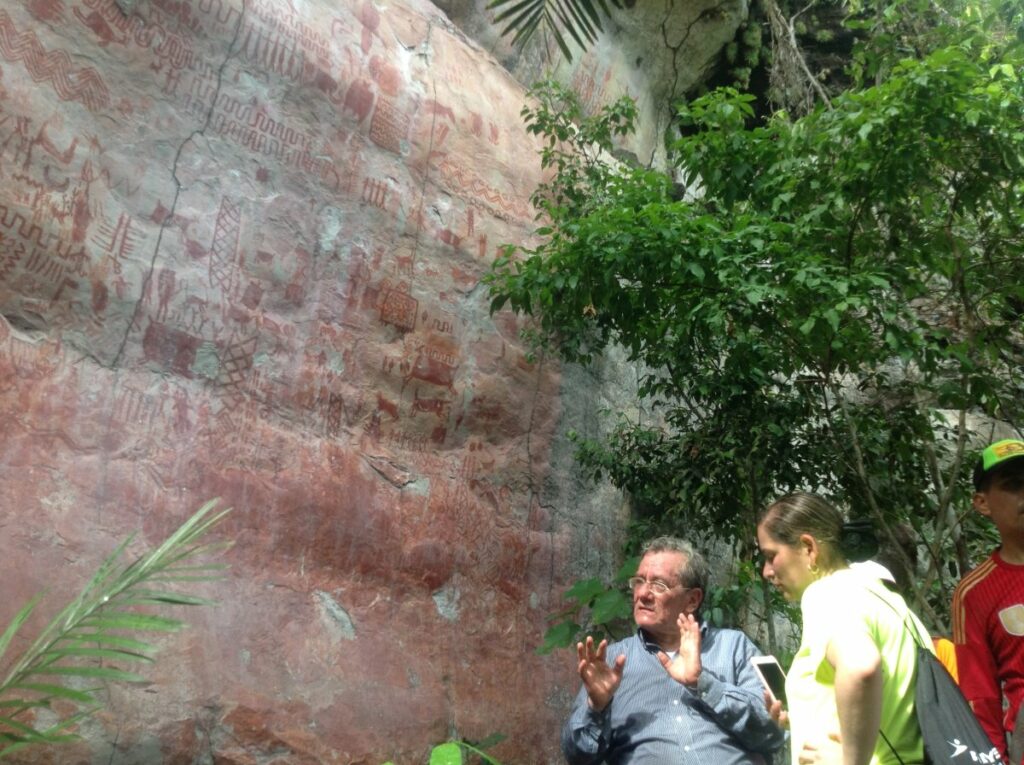
The rock shelters, which are among the oldest human settlements in the Amazon, were excavated and studied in 2017 and 2018. The team of researchers wanted to find out when humans first settled in the area and how their hunting and farming practices affected the local biodiversity. In addition to the paintings, the excavations also provided insight into the diet of these early hunter-gatherers. They found bone and plant remains that suggest their diet consisted of various foods such as palm and tree fruits, piranhas, snakes, alligators, frogs, rodents such as paca and capybara, and armadillos. The excavation was made possible after a peace treaty was signed between the Colombian government and FARC, a rebel guerrilla group, in 2016, which allowed access to the previously inaccessible site.
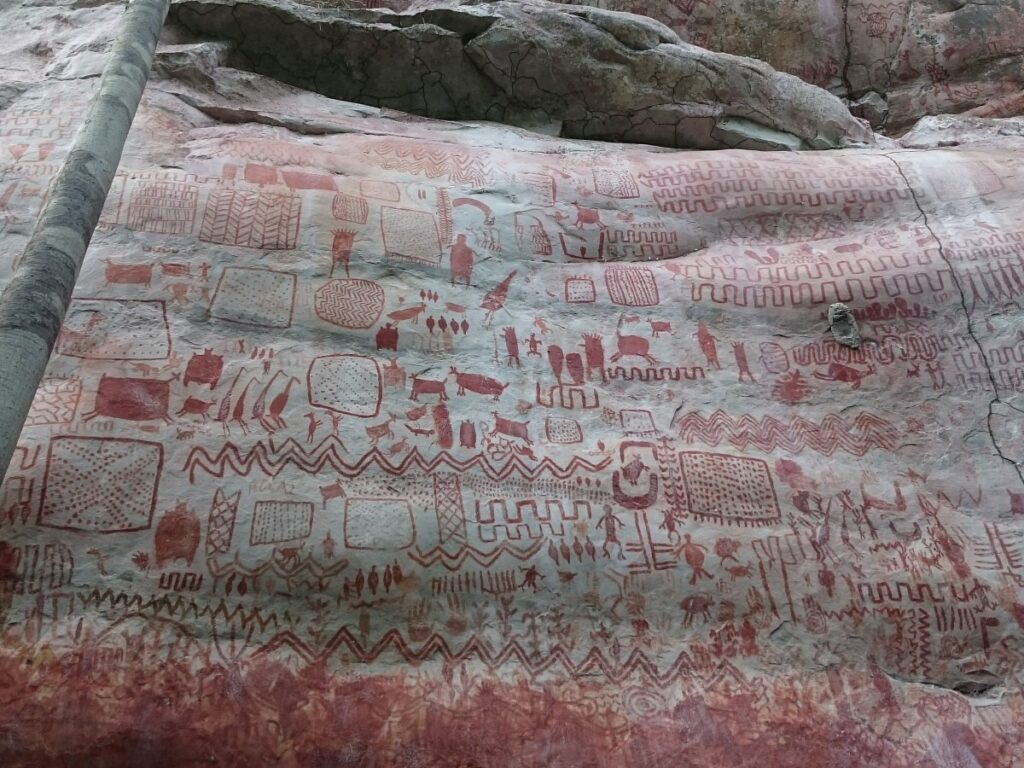
Study co-researcher José Iriarte, an archaeologist at the University of Exeter, stated that the rock paintings offer remarkable evidence of how humans transformed the environment and how they engaged in hunting, farming, and fishing. He also suggested that art was likely a crucial component of their culture and served as a means of social connection. Unfortunately, due to the pandemic, research on the site has been suspended, but the team remains convinced that the neighboring rainforest conceals more prehistoric treasures to be uncovered.
Do not forget to share your opinion with us to provide you with the best posts !



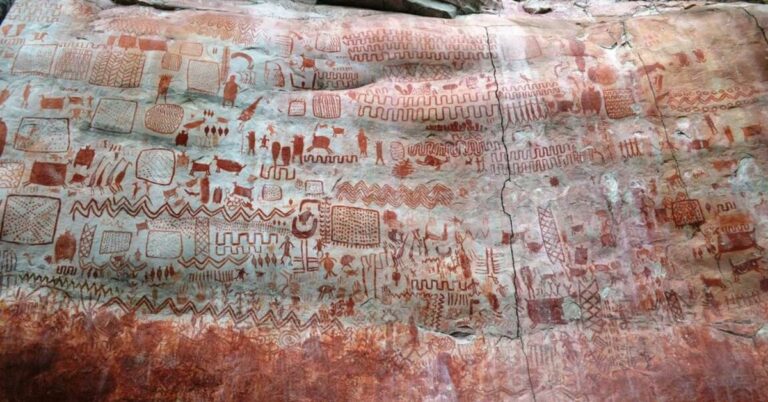
0 Comments